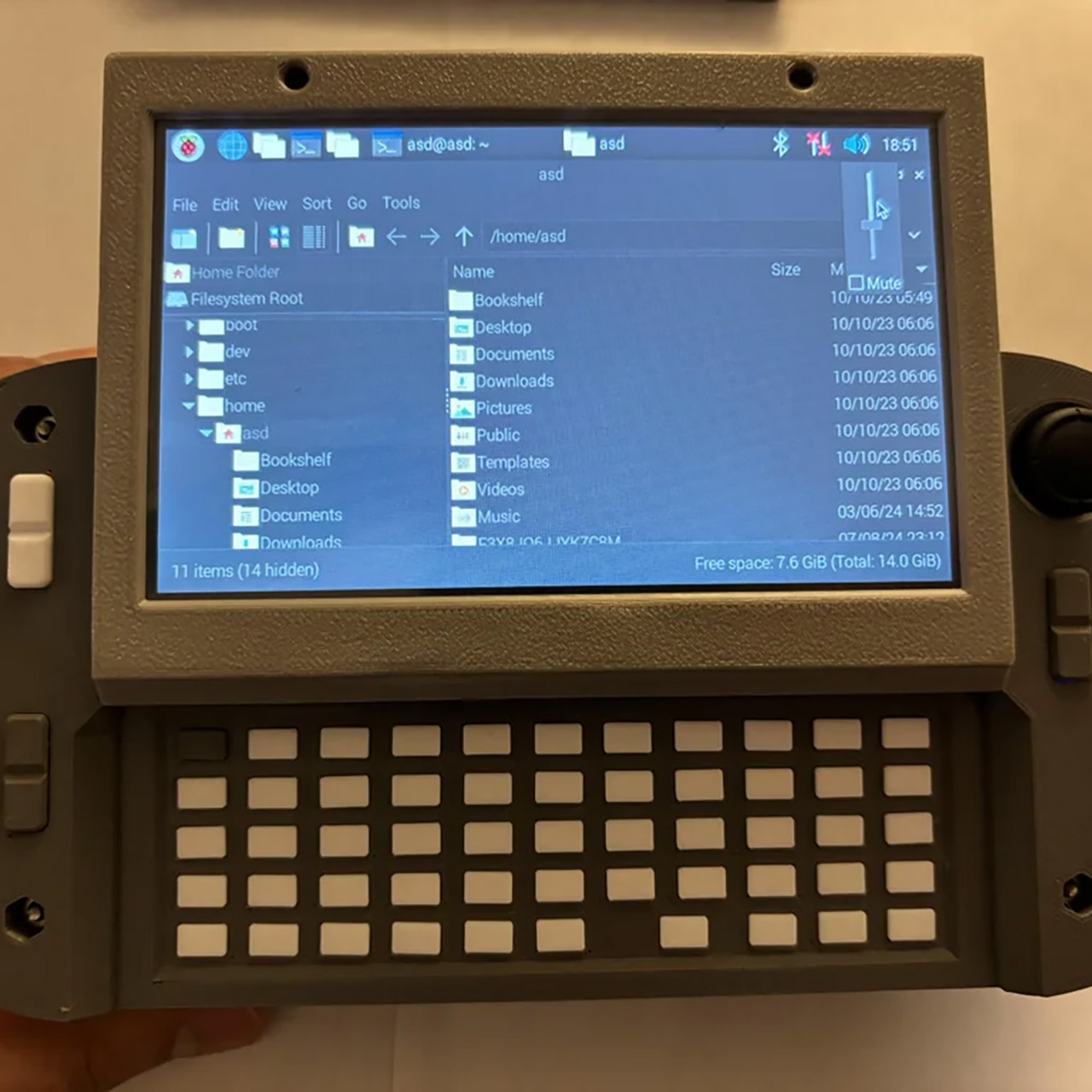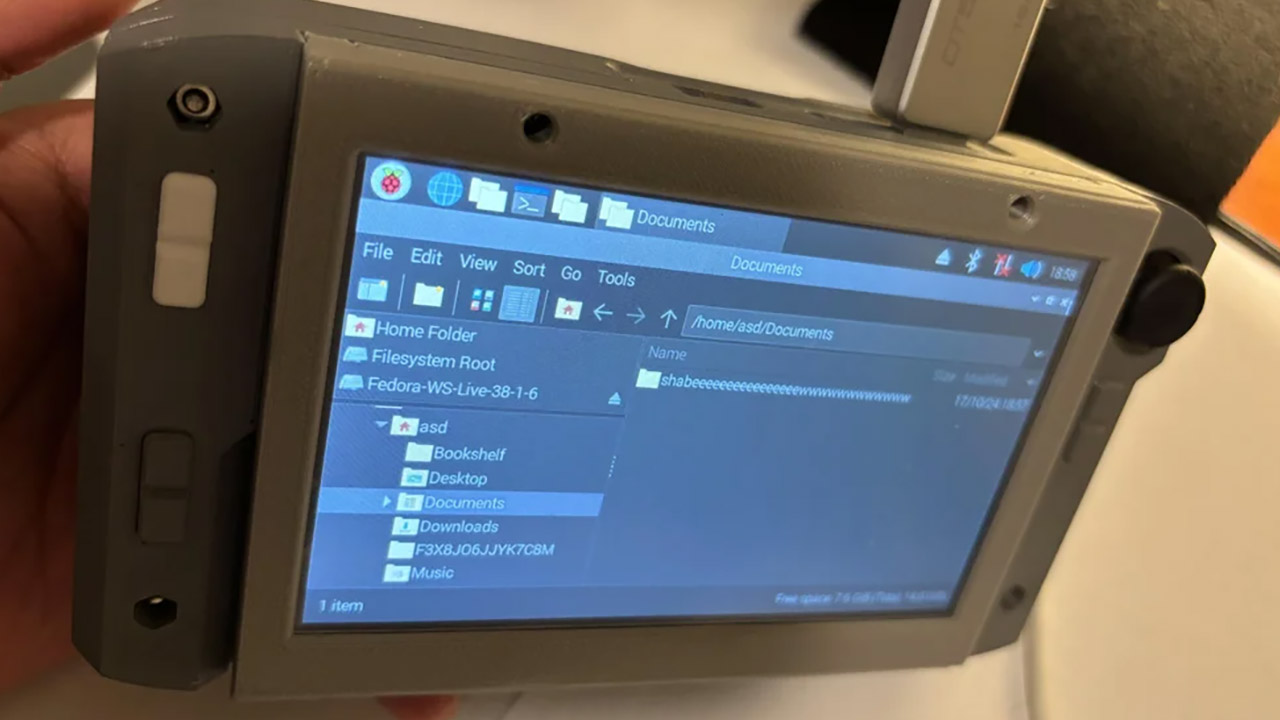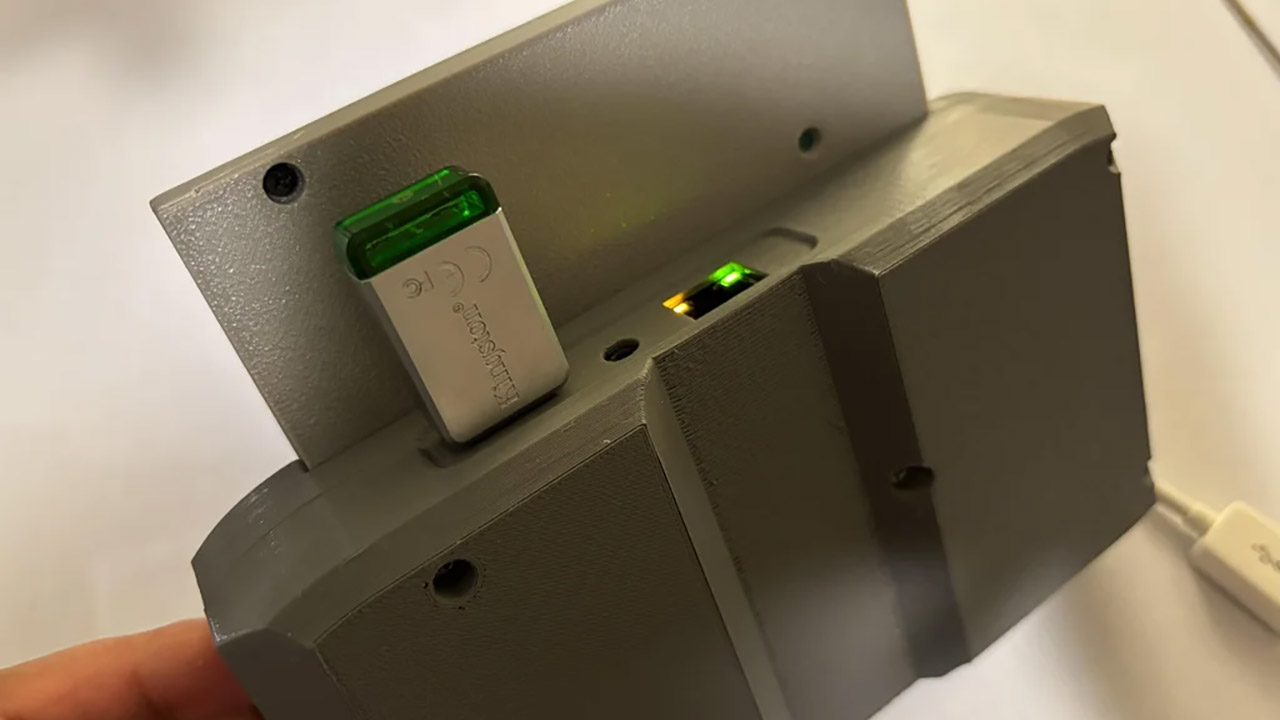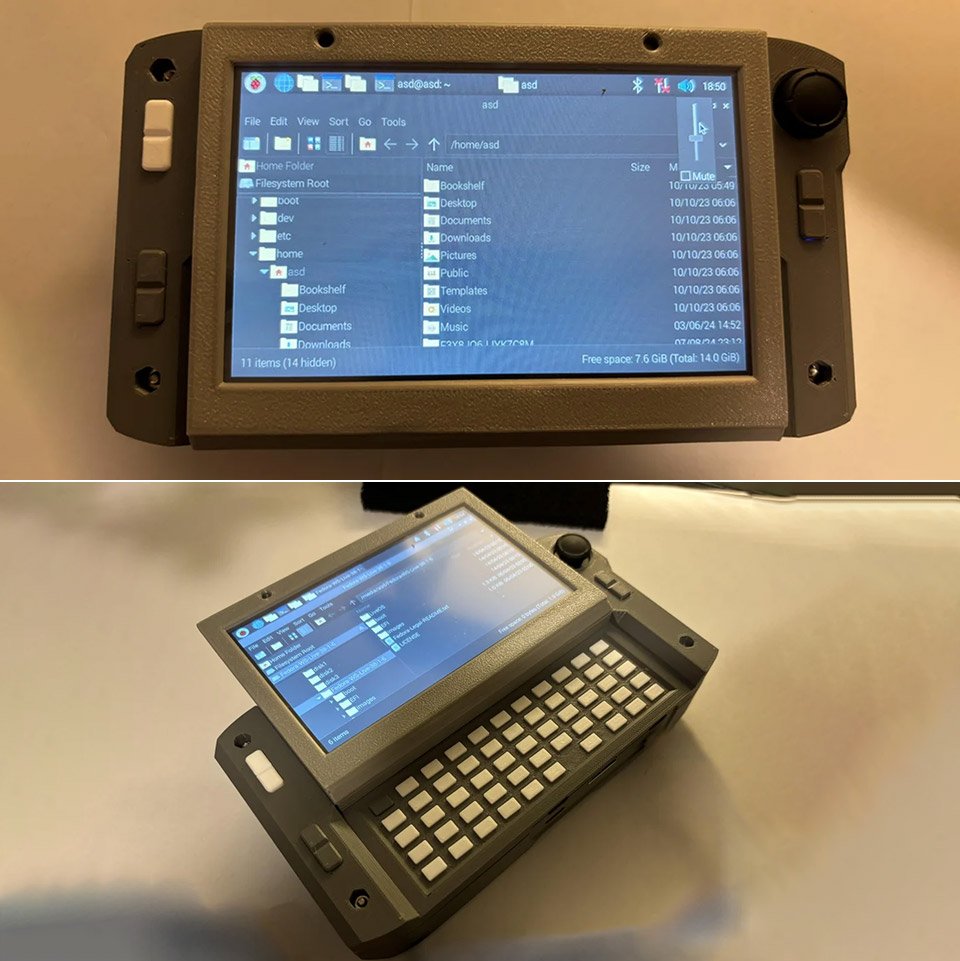Rahmanshaber remembers the pocket computers of the early 2000s, but then smartphones took over, smoothing out the edges with glass screens and swipes. Now, with parts like the Raspberry Pi widely available, anyone can bring that era back in the form of the MutantC v5.1—a handheld PC you assemble yourself, piece by piece, until it feels like an extension of your grip.
Start with the heart of the build: a Raspberry Pi Compute Module 4, tucked into a custom carrier board that spreads out its connections like a map of possibilities. Choose your memory—1GB for light tasks, up to 8GB if you plan to multitask through spreadsheets or stream videos. Storage comes via eMMC for speed or an SD card for easy swaps, and WiFi keeps you online without extra dongles. The whole setup draws power from two batteries in series: 18650 cells for a 7000mAh pack that lasts through a morning of work, or beefier 21700s pushing 10000mAh for all-day adventures. Slip in the batteries and the MutantC powers to life, ready to boot into Raspberry Pi OS or whatever Linux flavor you prefer.
Slide open the 5-inch LCD—though a 4.3-inch option works if you want something more compact—and the screen glides up on rails you print yourself. Beneath waits a 61-key keyboard, each button customizable for shortcuts or layouts that match your typing rhythm. Six shoulder buttons sit along the edges, perfect for quick navigation in menus or firing off commands in games. For pointing and clicking a 3D Hall-effect joystick takes center stage; magnets sense its tilt without wear so movements stay precise over years of use. Two extra buttons nearby handle left and right clicks, turning the whole top into a makeshift mouse pad you control with your thumb.

An ESP32-S2 chip handles the inputs, translating key presses and joystick movements into signals the Pi understands. A strip of NeoPixels glows along one side, connected directly to the Pi for alerts: a soft pulse for notifications, a steady light when the battery gets low. Everything fits inside a 3D printed shell, big enough to fit in a bag but thick enough to sit on a desk. Print the parts from the files Rahmanshaber shares for free, sand the edges for comfort and screw it together with screws that double as handgrips.

Expansion turns the MutantC into a chameleon. A PCIe Gen2 slot is ready for add-on cards – an SSD for faster file access or an OCuLink adapter to hook up external graphics if you want to render more. Two USB 2.0 ports flank it, for thumb drives or peripherals, while 17 GPIO pins expose SPI, I2C and PWM lines for sensors or custom circuits. An external display port mirrors the screen to a monitor, so you can dock the handheld and work big when you’re home. Rahmanshaber designed these openings with future upgrades in mind; plug in a GPS module from an earlier MutantC version and suddenly you have a portable navigator.

Assembly requires no magic, just patience and basic tools. Download the bill of materials from the project’s GitLab page where every resistor and wire is listed with sources. Solder the board in an afternoon, following the steps on Instructables with photos of each connection. Flash the firmware to the ESP32 with a simple upload – no deep coding required – and test the keyboard by typing a line into a terminal.
[Source]
